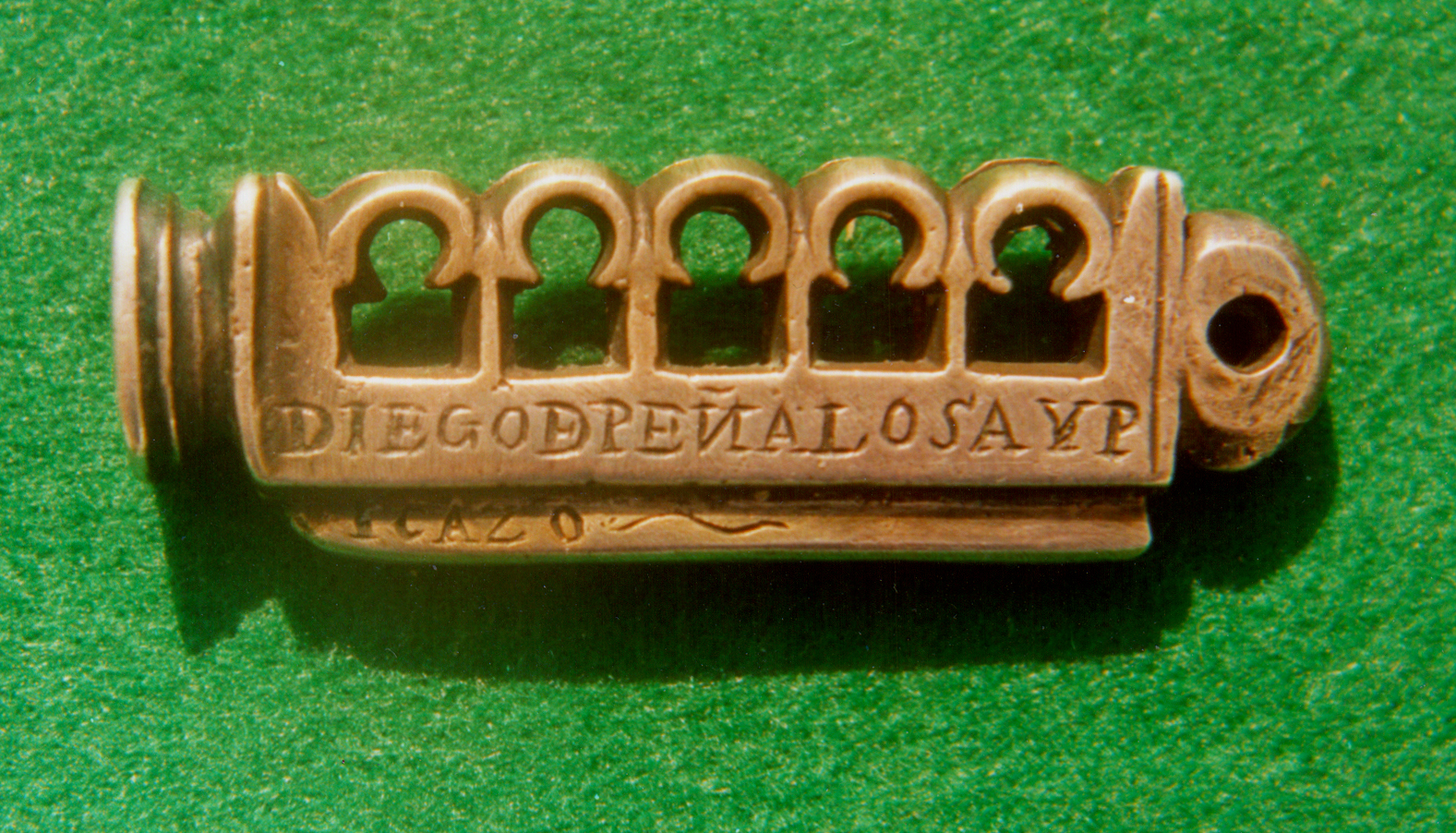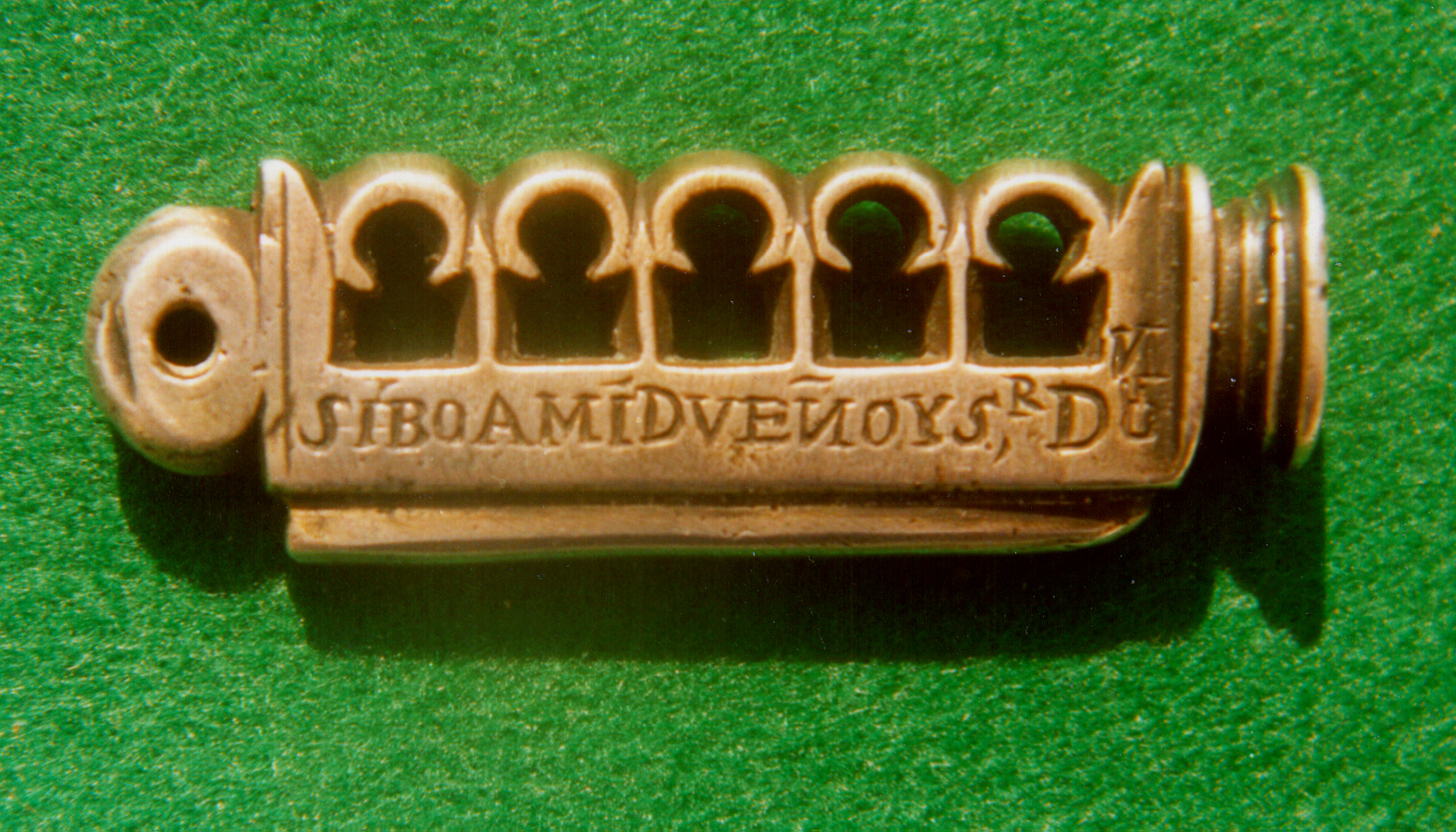
Our TOM for July is a mystery item. It was found at the Cabin Wreck site in the early 60’s by the Real Eight CompanyAlso referred to occasionally as “The Real 8 Company”- was incorporated in 1961. It had eight members….Kip Wagner, Kip Kelso, Dan Thompson, Harry Cannon, Lou Ullian, Del Long, Erv Taylor and Lis... More. (NOTE: The Real Eight CompanyAlso referred to occasionally as “The Real 8 Company”- was incorporated in 1961. It had eight members….Kip Wagner, Kip Kelso, Dan Thompson, Harry Cannon, Lou Ullian, Del Long, Erv Taylor and Lis... More was responsible for recovering vast amounts of treasure from the wreck sites of the 1715 Fleet from the 1960’s into the 1970’s).
Upon close inspection, it is hard to determine what this mystery item is. The question of exactly what it is was answered by none other than Fleet Society Director, Ernie Richards, who conducted his own research into the subject about a dozen years ago. What intrigued him (and everyone else who has seen this item) was the detailed inscription on both sides of the artifact. The first side reads: SÍBO A MI DVEÑO Y SR DON, and the second side continues DIEGO DE PEÑALOSA Y PICAZO. Ernie’s best translation was “I Serve My Owner and Master Don Diego de Peñalosa y Picazo.” But, the translation, while interesting, did not provide a clue as to what the object was.
Undaunted, Ernie continued his investigation by searching books in his library. In Bob Marx’ Shipwrecks of the Western Hemisphere (World, 1971), just before page 265, was the answer he was searching for. The caption read, “Silver penknife (the iron blade is missing) showing the owner’s name.” This was confirmed by a photograph from the State of Florida Bureau of Archaeological Research found in Noel Wells’ (TX) book Small ArmsInsignia of a family or country, containing specific figures and colors and passed along through hereditary lineage. of the Spanish Treasure Fleets which identified the artifact as a “folding knife”. However, there was one key element of the artifact that still needed to be investigated. While not readily apparent in the photographs above, the butt end of the item has a seal on it. This seal was used to impress a monogram or crest into sealing wax. The incredible relic had served two purposes for its “owner and master”: it was a folding pocket knife and it was a seal with the owner’s family crest (or something) incised into the butt of the handle. Real Eight Co. founding member Lou UllianLouis J. (Lou) Ullian (1932 – 2010) Was a diver and original member of the Real Eight Company. A native of Worcester, Massachusetts he served in the U.S. Navy, Naval Weapons Station from 1956 – 19... More remembers the day the artifact was recovered: “It was found under a cannon on the outside edge of the first reef, and at first we did not know what it was. It was discovered next to one of the first gold coins we found on the ‘Cabin Wreck’.” Ernie’s research also helped him to determine that the knife’s handle is approximately 3 inches long.
He also obtained a photo of the seal end of the handle from James Levy and Roy Lett, formerly of the State of Florida Bureau of Archaeological Research. James Levy, who has since retired, gave us this first-hand description of the seal: “Roy and I went and took some pictures at the end of the knife handle using a hand-held flashlight to sidelight it. They aren’t perfect by any means, but I think you can use them to get the idea. At the bottom are some wavy lines which may represent the land or ocean as on the Lima and Potosi coins. Above the waves is a structure with a doorway and more structure on top (maybe a church or government building). On the right side and slightly above the structure (when you’re looking at it), is an asterisk or star. On the left side and slightly above, is what appears to be a crescent moon. On the left and right sides are three decorative scrolls. Above the structure is SOMETHING which looks, to me, like a stylized helmet or armor. It could also be a cloud and the sun, which looks like it might be during an eclipse. At any rate, it’s interesting.”

The images and portions of the text were from an article published by Ernie Richards in the PLUS ULTRA Newsletter, 4th -Quarter, 2005. Also, thanks to James Levy and Roy Lett, formerly of the State of Florida, Bureau of Archaeological Research for their contribution to this text.
